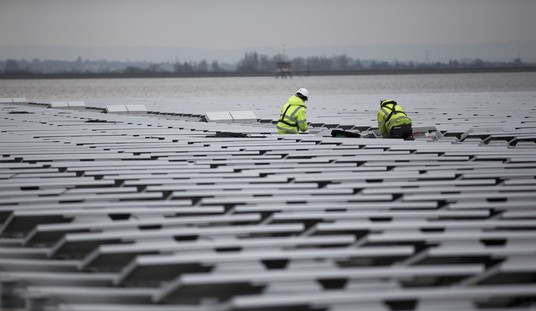
Today’s entry from the RedState Department of History has to do with the famed “Arsenal of Democracy.”
On March 11, 1941, President Franklin Roosevelt signed the Lend-Lease Act into law, allowing the United States to begin sending material aid to Britain, and eventually the USSR and other nations, prior to American entry into the Second World War.
During 1940, Roosevelt became increasingly concerned about Axis ascendancy in Europe, but isolationist sentiment in the United States precluded direct support for Britain, which at that time stood alone against Hitler.
The Neutrality Acts of 1935, 1936, 1937 and 1939 tied Roosevelt’s hands to a point, but the 1939 act allowed for “cash and carry” sales of arms to belligerent nations — which to Roosevelt, meant Great Britain.
The Lend-Lease Act was described by Roosevelt at the time as “lending your neighbor a fire hose when there’s a fire”, and with Hitler’s Germany running rampant everywhere, that message resonated enough within Congress to get the act passed and signed on March 11, 1941.
The results, for the time, were staggering. A full 17 percent of American warmaking industrial capacity from 1941-45 — over $50.1 billion, or $667 billion in today’s money — went to other nations through Lend-Lease.
$31 billion went to Britain, $11.3 billion went to the USSR (including enough materiel through the Persian Route to equip nearly a quarter of the Red Army in the field in 1945), $3 billion to France and $4.2 billion to the other Allies. In return, the United States received $7.8 billion in reverse Lend-Lease, mainly in technology and rent on air bases.
Nearly one-quarter of all British munitions came through Lend Lease in 1943-44 and 92 percent of Russian railroad equipment production was American in nature, including 1,900 locomotives and over 11,000 railroad cars. In 1945, one-third of the Red Army’s truck stock was American built, 7,000 American-built tanks were in service in Russian hands, and the last of 18,700 American aircraft — thirty percent of Russian airframe production during the war – was delivered to the Eastern Front.
Russian historian Boris Sokolov had this to say:
“On the whole the following conclusion can be drawn: that without these Western shipments under Lend-Lease the Soviet Union not only would not have been able to win the Great Patriotic War, it would not have been able even to oppose the German invaders, since it could not itself produce sufficient quantities of arms and military equipment or adequate supplies of fuel and ammunition. The Soviet authorities were well aware of this dependency on Lend-Lease. Thus, Stalin told Harry Hopkins [FDR’s emissary to Moscow in July 1941] that the U.S.S.R. could not match Germany’s might as an occupier of Europe and its resources.”

Soviet Katyusha rockets mounted on the back of an American Studebaker Lend-Lease truck. By Nick Lobeck – Photo taken at the Museum of the Great Patriotic War, Moscow, Russia, CC BY-SA 2.5,
After the war, there was still the matter of repayment. American aid to Britain was given a 90 percent discount with payments set up on a fifty-year plan at two-percent interest with deferments allowed. Thus it was that on December 29, 2006, Britain paid the United States $83.3 million, officially ending its Lend-Lease debt.
Enjoy today’s open thread!














Join the conversation as a VIP Member